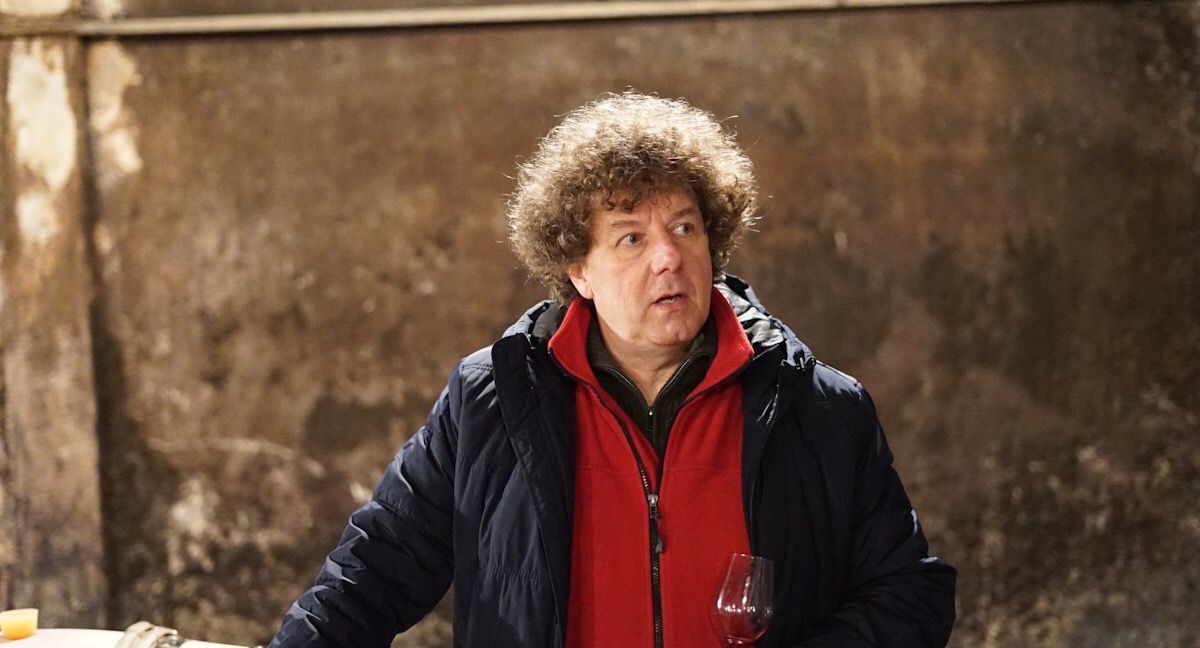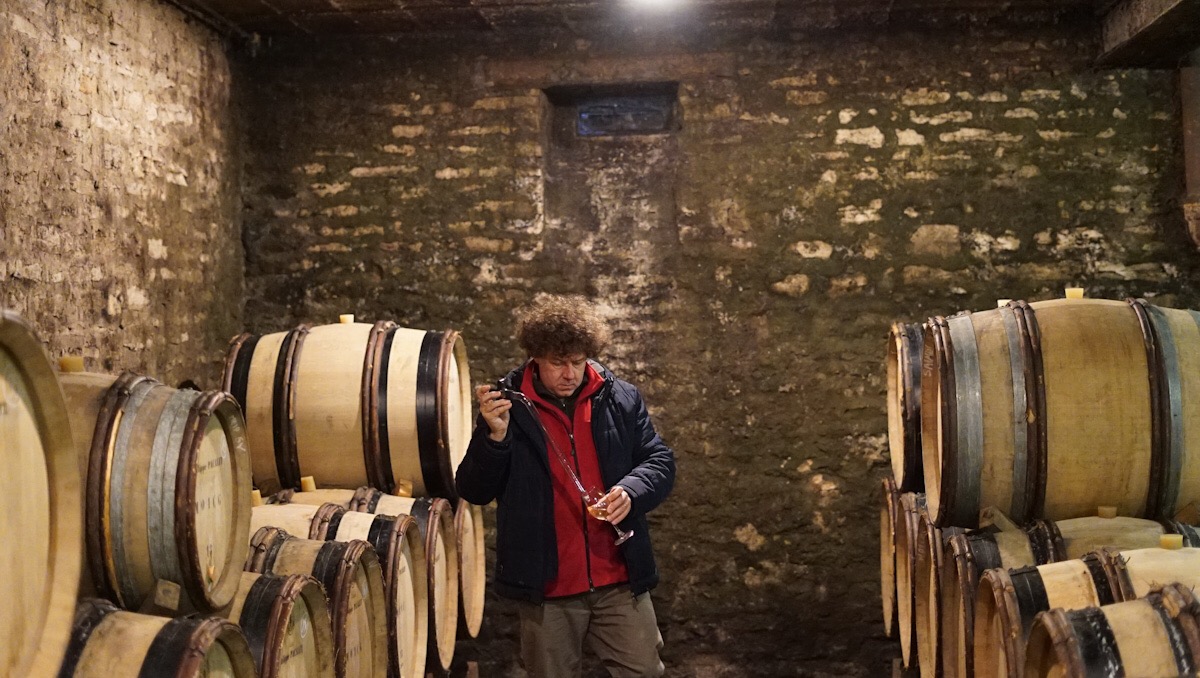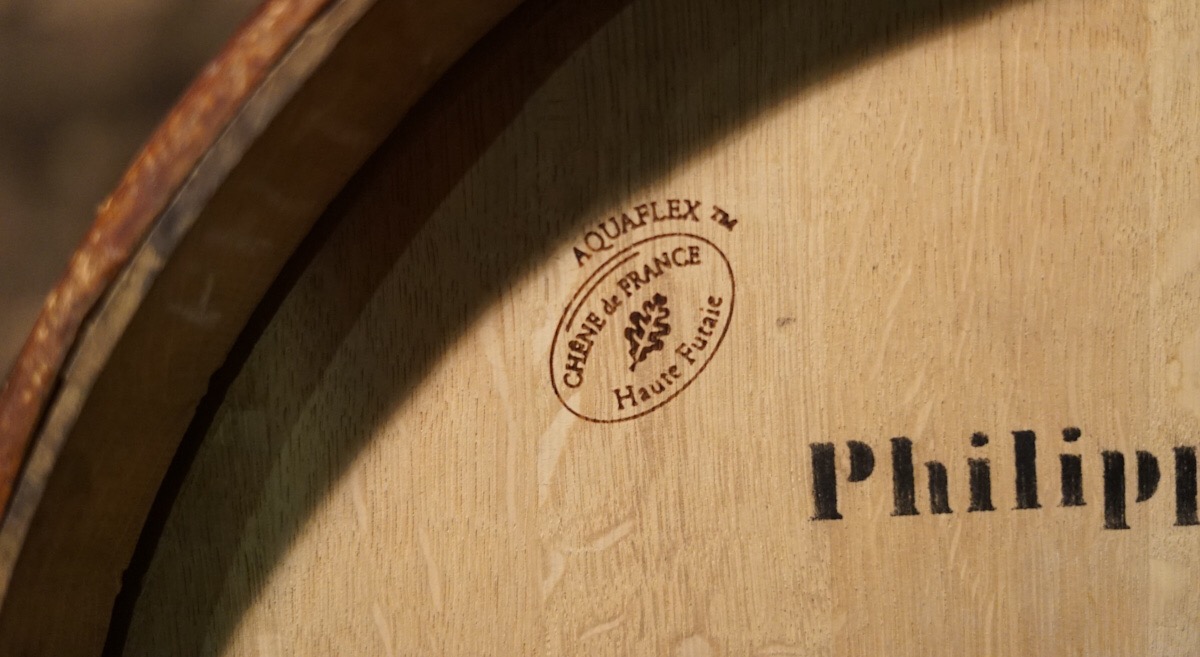It’s still very early to taste the 2018s, and to make detailed tasting notes at this stage would in my view be premature.
It is however great fun to taste the 2018s already now – to form an impression from the wines in general. A great place to be is then Maison Philippe Pacalet, as the wines from this estate are relatively quick in their development during the vinification.
The malolactic fermentation is already done .. and the wines are very tastable and also already express the terroirs to a certain degree.
In other words … lets taste.
The 2018 red Pacalet wines
We tasted most of the Pacalet range, from the lesser appellations to Echezeaux and Ruchottes-Chambertin, and also a few surprises from the Rhone valley … the Côte Rotie and the Cornas and Pacalets excellent Beaujolais from Moulin-à-Vent.
As mentioned this is very early – and I will not make individual tasting notes for the Pacalet wines … but some notes and remarks can be of some use – I hope.
Firstly the 2018s are big and rather muscular wines, a rather hot vintage, yet in my view better controlled than 2003 – although Pacalet did well in 2003 as far as I recall.
The experienced vignerons have learned a lot since the 2003 vintage 15 years ago – and they were more prepared this time around.
So the wines are substantial at Pacalet in 2018 – and the wines seem to have some more tannins and backbone than normal – and this does in my view suit the wines very well indeed.
I don’t know if what seem to be a further extraction is a deliberate choice, but I do think that big wines like these really need some more structure and backbone, and in my view Philippe has found a lovely balance.
The differences and the climate
Looking at the wines it is – I think – clear that there is a variation between the cuvées – where the style of the wines are more or less affected by the climatic conditions.
A wine like the Gevrey-Chambertin Bel-Air 2018 is clearly cooler and vinified lighter than some of the more dense terroirs south of the village of Nuits-Saint-Georges.
It’s very early, but it appears that some truly big wines have been made in some of the big 1er cru and grand cru vineyards – as these often have the mineral backbone to support even a large density wine.
Alcohol levels seem relatively moderate at Pacalet, so should not be a problem here ..
Findings .. so far
Philippe Pacalet is an experienced wine maker, and is normally producing vivid and energetic wines – and not normally on the extracted side at all.
It’s pretty clear that the 2018s have a bit more oomph than some other vintages – but still I find the wines balanced and refined. A few wines were perhaps slightly on the dense side currently, but this could easily change during the elevage.
In general I find the 2018s very exciting from Maison Philippe Pacalet … delightful balance so far.
The white 2018s – from Pacalet
I find it difficult to taste the whites this early – and especially at Maison Pacalet I find this challenging.
I was like in other places pretty surprised to see the white wines pretty balanced currently – and in that sense showing good promise. It is however very early .. so things can change during the elevage.
In my experience the whites from Phillip Pacalet does however stand their ground very well even in warm vintages, and I could well imagine that the white 2018s could have some interesting surprises in store for us.
Time and elevage will show!





 - A true vin d’émotion – a Burgundy of passion
- A true vin d’émotion – a Burgundy of passion - A truly hedonistic wine – lively and enjoyable
- A truly hedonistic wine – lively and enjoyable - A vivacious wine for pure indulgance
- A vivacious wine for pure indulgance - A Vin Vif - fresh, energetic and with a light appearance
- A Vin Vif - fresh, energetic and with a light appearance
Leave a Reply
You must be logged in to post a comment.